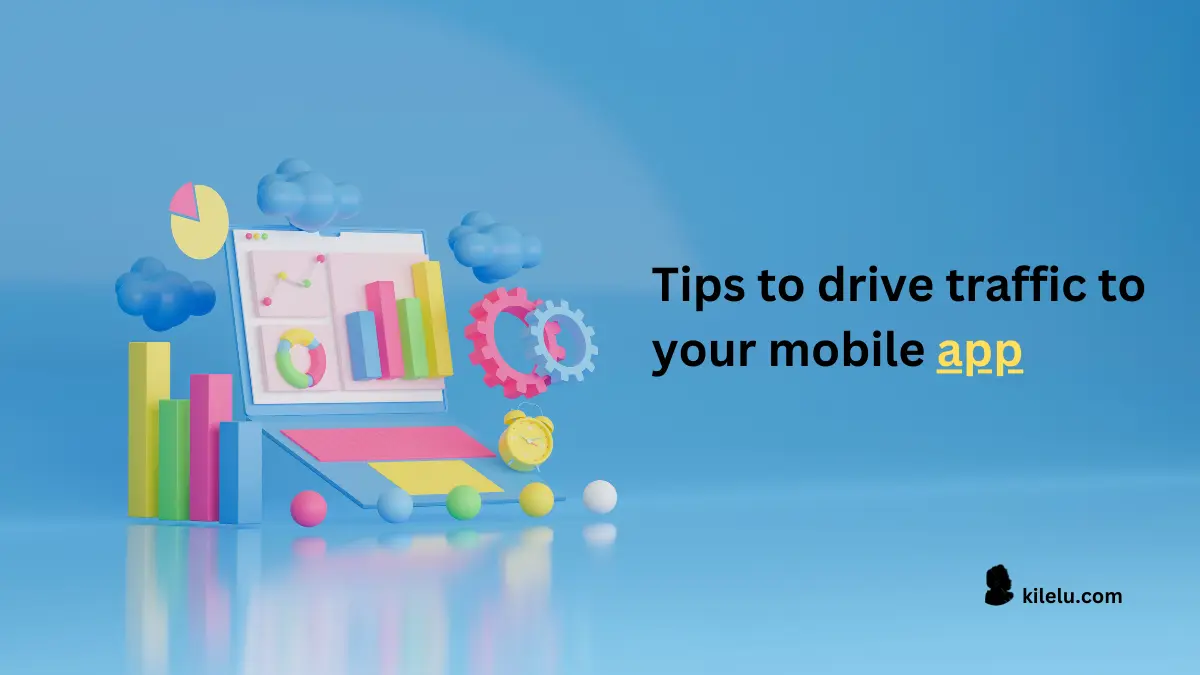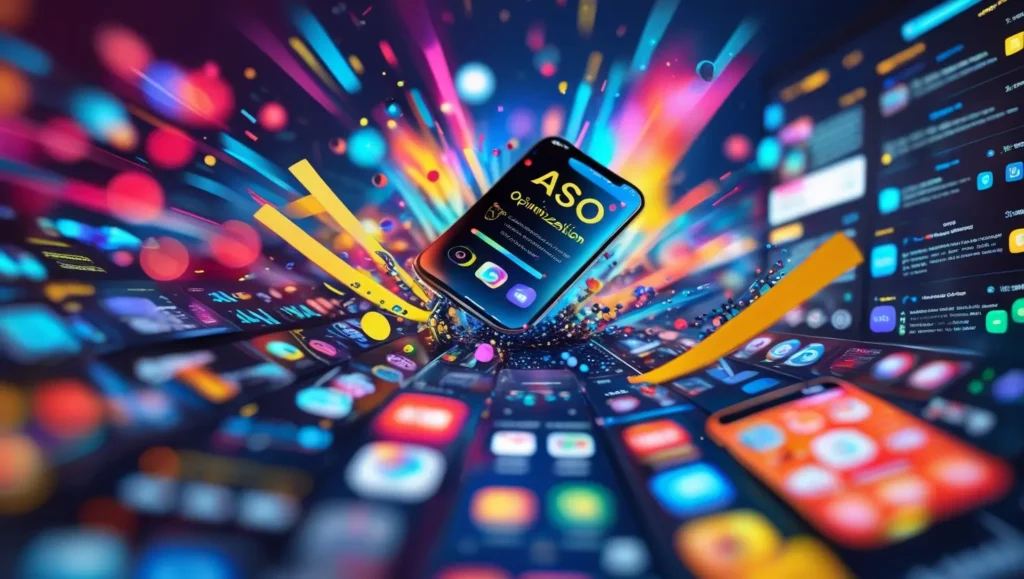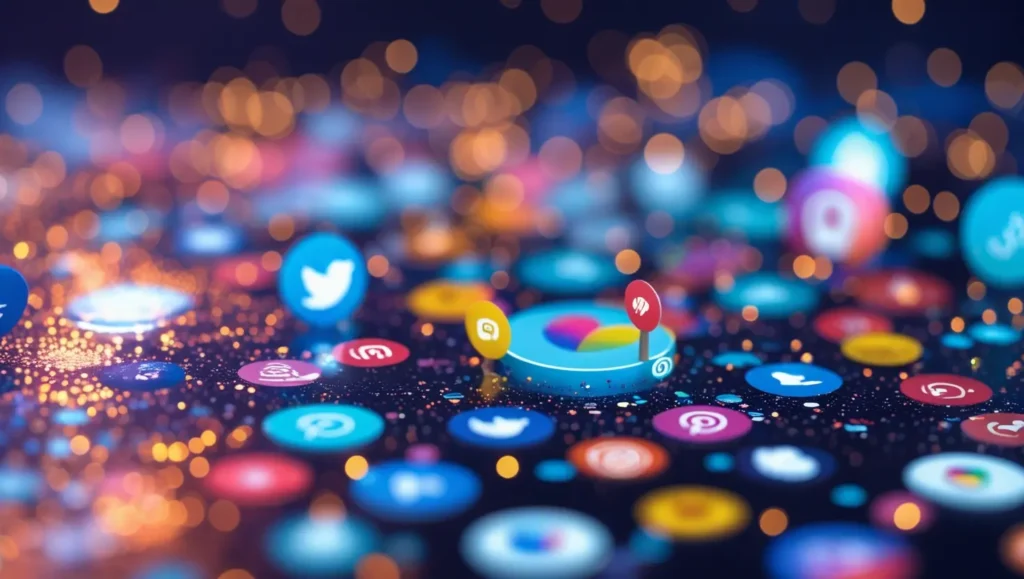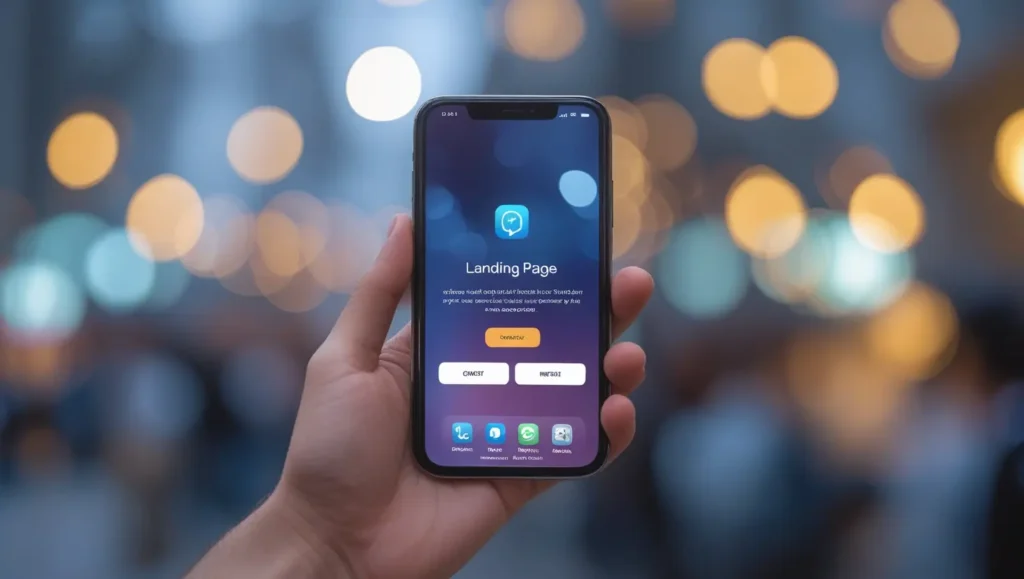8 Tips to Drive Traffic to Your Mobile App

In today’s competitive digital landscape, simply developing a mobile app isn’t enough. With millions of apps available in the Apple App Store and Google Play Store, standing out and attracting users requires strategic effort. Many great apps fail to gain traction because they don’t get enough visibility, while others successfully climb the ranks through smart marketing and optimization.
Driving traffic to your app isn’t a one-size-fits-all approach. Instead, it requires a combination of well-planned tactics that work together to maximize your reach and engagement. From optimizing your app store listing to leveraging paid advertising, social media marketing, and influencer collaborations, each method plays a crucial role in ensuring your app gets noticed by the right audience.
In this blog, we’ll explore eight essential strategies to help increase your app’s visibility and attract more downloads:
- App Store Optimization (ASO): Improve search rankings by optimizing titles, descriptions, keywords, and visuals.
- Paid Advertising Campaigns: Utilize platforms like Google AdWords and Facebook Ads to target potential users.
- Social Media Marketing: Engage with audiences on social platforms and collaborate with influencers.
- Cross-Promotion: Leverage existing websites, blogs, and YouTube channels to drive app traffic.
- High-Quality User Experience: Ensure a smooth, user-friendly interface and keep users engaged.
- Influencer Marketing: Partner with niche influencers to increase brand awareness and credibility.
- Content Marketing: Create valuable blog posts and videos to attract organic traffic.
- Landing Page Optimization: Design an effective landing page with strong CTAs and SEO optimization.

By implementing these strategies, you’ll significantly boost your app’s chances of gaining traction and reaching a wider audience.
Tips to Drive Traffic to Your Mobile App
1. App Store Optimization (ASO)
App Store Optimization (ASO) is one of the most effective ways to increase your app’s discoverability. Just like SEO for websites, ASO helps improve your app’s ranking in search results within app stores, leading to more organic downloads. Since a majority of users discover apps through app store searches, optimizing your app’s listing is essential for success.

Key Elements to Optimize
- Title & Keywords: Choose a clear, descriptive title with relevant keywords to improve search rankings.
- App Description: Craft a compelling, keyword-rich description that highlights your app’s key features and benefits.
- Visual Assets: Optimize icons, screenshots, and preview videos to make your app visually appealing and informative.
- Category Selection: Place your app in the right category to improve discoverability among target users.
Importance of Managing Reviews and Ratings
App ratings and reviews play a critical role in ASO. Higher-rated apps rank better in search results and attract more downloads. Encourage satisfied users to leave positive reviews, promptly respond to feedback, and address any issues to maintain a strong reputation.
By optimizing these elements, you can improve your app’s visibility, attract more users, and increase overall downloads—all without spending a dime on advertising.
2. Paid Advertising Campaigns
While organic traffic is essential, paid advertising campaigns can provide an immediate boost to your app’s visibility. Platforms like Google AdWords, Meta Ads, and TikTok Ads offer highly targeted ad solutions that help drive app installs by reaching the right audience at the right time.
Overview of Paid Ad Platforms
- Google AdWords (Google App Campaigns): Uses machine learning to place your ads across Google Search, YouTube, Google Play, and the Display Network.
- Facebook & Instagram Ads: Leverages detailed demographic and interest-based targeting to show ads on users' feeds, stories, and reels.
- TikTok Ads: Engages younger audiences with visually compelling, short-form video ads.
- Twitter & LinkedIn Ads: Useful for niche targeting, especially for business or productivity apps.
How Targeting Specific Demographics Helps in App Promotion
One of the key advantages of paid advertising is the ability to define and target specific user segments based on factors like age, location, interests, and behavior. This ensures that your app promotion reaches people who are most likely to download and use it. For example:
- A fitness app can target health-conscious users who engage with workout-related content.
- A finance app can target users interested in personal budgeting and investment.
- A gaming app can target players who frequently engage with mobile games.
Importance of Analytics in Optimizing Ad Performance
Paid advertising isn't just about running campaigns—it’s about refining them over time using data-driven insights. Platforms provide analytics tools that track key metrics like cost per install (CPI), click-through rate (CTR), conversion rate, and return on ad spend (ROAS). By continuously testing different ad creatives, audiences, and bidding strategies, you can maximize your ad budget and achieve better results.
3. Social Media Marketing
Social media is a powerful tool for building brand awareness, engaging potential users, and driving app downloads. With billions of active users across platforms like Facebook, Instagram, Twitter, LinkedIn, TikTok, and Reddit, social media marketing allows you to create a community around your app and connect directly with your audience.

How Social Media Platforms Can Boost App Visibility
Each social media platform offers unique opportunities for app promotion:
- Facebook & Instagram: Ideal for sharing updates, running paid promotions, and engaging with users via comments and stories.
- Twitter: Great for real-time engagement, customer support, and industry discussions.
- TikTok & YouTube: Video-based platforms that allow for engaging demonstrations, app walkthroughs, and user-generated content.
- Reddit & LinkedIn: Niche-focused communities where valuable discussions can drive organic traffic to your app.
Engaging Content Strategies and Community Interaction
To attract and retain users, you need to create compelling content that resonates with your audience. Some effective strategies include:
- App feature highlights: Short videos or infographics showcasing key features.
- Behind-the-scenes content: A look into app development, updates, or upcoming features.
- User-generated content: Encouraging users to share their experiences with the app.
- Polls and Q&A sessions: Interactive posts to engage and learn from your audience.
- Contests and giveaways: Offering incentives for app downloads and user engagement.
The Role of Influencers in App Promotion
Influencer marketing is a game-changer when it comes to reaching a larger and more engaged audience. Partnering with influencers in your app’s niche can help generate buzz and increase credibility.
- Micro-influencers (10K–100K followers) often have highly engaged audiences and can drive authentic recommendations.
- Macro-influencers (100K+ followers) provide wider reach but often require a bigger budget.
- Niche influencers (tech bloggers, fitness coaches, finance experts) help reach the right target audience with higher conversion rates.
By leveraging paid advertising and social media marketing, you can create a multi-channel strategy that effectively increases app visibility and user engagement.
4. Cross-Promotion
Cross-promotion is an effective strategy that leverages existing traffic sources—such as your website, YouTube channel, blogs, or other digital assets—to drive downloads for your mobile app. By strategically integrating your app across different platforms, you can attract users who are already interested in your content.
Using Existing Websites, YouTube Channels, and Blogs to Promote the App
If you have a website or blog, consider:
- Placing banner ads or call-to-action buttons that direct visitors to download your app.
- Writing blog posts about your app’s features and benefits.
- Embedding download links in relevant articles.
For YouTube channels, you can:
- Create app demo videos to showcase key functionalities.
- Place download links in video descriptions and pinned comments.
- Use YouTube Shorts or Stories to generate buzz.
Writing Guest Posts and Linking Back to the App
Guest blogging on popular websites in your niche can introduce your app to new audiences. Steps to follow:
- Identify authoritative blogs that align with your app’s industry (e.g., a fitness blog for a workout app).
- Pitch valuable content ideas that naturally incorporate your app.
- Include a call-to-action (CTA) with a link to download your app.
By providing useful insights while promoting your app subtly, you can drive organic downloads without appearing overly promotional.
The Power of Deep Linking for a Seamless User Experience
Deep linking allows users to bypass multiple steps and land directly in a specific section of your app. Instead of just opening the app’s homepage, deep links can take users to:
- A specific feature or onboarding page.
- A discount offer or limited-time promo.
- A customized experience based on their previous interactions.
This streamlined approach enhances user experience and reduces drop-off rates, ultimately leading to higher conversions.
5. High-Quality User Experience
Even the best marketing strategies won’t work if your app provides a poor user experience. A well-designed app with a smooth interface, fast performance, and engaging features will encourage users to keep coming back and recommend it to others.

Importance of an Intuitive Interface and Seamless Performance
A great User Experience (UX) is crucial for app success. Key elements include:
- Easy navigation: Users should find what they need quickly without frustration.
- Minimal load times: Slow apps drive users away—optimize for speed.
- Attractive UI: A clean, modern design enhances visual appeal and usability.
Investing in UI/UX testing and user feedback ensures your app meets user expectations.
The Role of Regular Updates and Bug Fixes
Continuous improvement keeps your app relevant and competitive. Frequent updates help:
- Fix bugs and security vulnerabilities to prevent crashes.
- Introduce new features that align with user demands.
- Enhance compatibility with the latest mobile OS versions.
Apps that remain stagnant risk losing users to competitors that offer better performance and innovation.
How Push Notifications Help in User Retention and Referrals
Push notifications keep users engaged by sending timely and personalized messages. Best practices include:
- Personalization: Address users by name and tailor messages based on their preferences.
- Limited frequency: Avoid overwhelming users with excessive notifications.
- Clear CTAs: Encourage users to take action (e.g., "Claim Your Exclusive Discount!").
Well-crafted notifications increase app retention, boost engagement, and drive referrals as satisfied users share your app with others.
6. Influencer Marketing
Influencer marketing has become a powerful tool for promoting mobile apps due to its ability to reach highly engaged audiences through trusted personalities. When influencers recommend an app, their followers are more likely to download and try it.
Why Influencers Are Effective for App Promotion
- High Engagement & Trust: Influencers have built credibility with their followers, making their recommendations more persuasive than traditional ads.
- Targeted Reach: You can choose influencers based on your app’s niche, ensuring the right audience sees your app.
- Authentic Promotion: Unlike direct ads, influencer content feels more natural and relatable, leading to better conversions.
Types of Influencer Collaborations
There are several ways to collaborate with influencers to promote your app:
- Sponsored Content – Pay influencers to create posts, videos, or stories showcasing your app’s features.
- App Reviews & Tutorials – Have influencers test your app and provide an honest review or demo.
- Giveaways & Discounts – Offer influencers exclusive promo codes to encourage downloads.
- Social Media Takeovers – Allow influencers to take over your app’s social media accounts for a day, engaging their audience directly.
How to Choose the Right Influencers for Your App
Selecting the right influencers is crucial for success. Consider:
- Relevance: Ensure the influencer’s content aligns with your app’s niche (e.g., fitness influencers for a workout app).
- Engagement Rate: High follower counts mean nothing if engagement (likes, comments, shares) is low.
- Authenticity: Choose influencers who genuinely interact with their audience rather than those with fake followers.
- Platform Suitability: Identify the best platform for promotion—Instagram, YouTube, TikTok, or Twitter—based on your target audience.
By leveraging influencer marketing, you can increase brand awareness, attract users, and boost app installs effectively.
7. Content Marketing
Content marketing is a powerful way to drive organic traffic to your app by providing valuable and engaging information. Instead of direct advertising, content marketing educates and attracts users, leading them to download your app naturally.
The Power of Valuable Content in Driving Traffic
Users are constantly searching for helpful and entertaining content. By creating relevant content related to your app’s purpose, you can:
- Boost SEO rankings and increase visibility on search engines.
- Build credibility in your industry.
- Engage potential users and guide them toward downloading your app.
Creating Blog Posts, Videos, and Guides Related to the App
Different types of content can attract users:
- Blog Posts – Write articles on topics relevant to your app (e.g., "10 Best Workout Routines" for a fitness app).
- Videos & Tutorials – Create explainer videos, how-to guides, or app walkthroughs to show its benefits.
- Infographics – Share visually appealing content with key app features and benefits.
- User Stories & Case Studies – Showcase testimonials and real-life success stories from app users.
Importance of Mobile-Optimized Content
Since your target audience will likely consume content on mobile devices, ensure:
- Fast-loading pages (optimize images, use responsive design).
- Clear and concise formatting (short paragraphs, bullet points).
- Clickable CTAs (Call-to-Actions) that guide users to download the app.
A strong content marketing strategy not only increases app traffic but also builds long-term user engagement.
8. Landing Page Optimization
A well-optimized landing page can significantly boost app downloads by providing a compelling first impression and guiding visitors toward taking action. A great landing page ensures that potential users quickly understand the app’s value and are encouraged to install it.

How a Compelling Landing Page Boosts App Downloads
Your landing page serves as a conversion tool, helping visitors decide whether to download your app. A strong landing page:
- Creates trust through social proof (reviews, testimonials, case studies).
- Showcases the app’s benefits clearly and concisely.
- Encourages action through strong Call-to-Actions (CTAs) like "Download Now" or "Try for Free".
Essential Elements of a High-Converting Landing Page
To maximize app downloads, your landing page should include:
- A Clear and Engaging Headline – Communicate your app’s core benefit in a single sentence.
- Compelling CTAs (Call-to-Actions) – Use action-driven buttons like "Get Started" or "Download Now" placed prominently.
- High-Quality Visuals – Include app screenshots, demo videos, or animations showcasing key features.
- Social Proof – Highlight user testimonials, star ratings, and media mentions to build credibility.
- App Store Links – Provide direct buttons to the App Store and Google Play for easy access.
- Minimal Distractions – Keep the page simple and focused on converting visitors into app users.
SEO Techniques to Improve Search Rankings for the Landing Page
To ensure more people find your landing page, apply these SEO best practices:
- Keyword Optimization: Use relevant keywords in your page title, meta description, and content (e.g., “best productivity app” or “top fitness tracker”).
- Mobile Responsiveness: Ensure your page loads fast and is optimized for all screen sizes.
- Backlink Building: Get other websites and blogs to link to your landing page for better search rankings.
- Technical SEO: Improve page speed, optimize images, and ensure clean URL structures for better indexing.
With a well-designed, SEO-friendly landing page, you can attract the right audience and convert more visitors into active app users.
Conclusion
Driving traffic to your mobile app requires a multi-faceted approach. By combining various strategies, you can increase your app’s visibility, engagement, and downloads.
Quick Recap of the 8 Strategies:
- App Store Optimization (ASO) – Optimize app titles, descriptions, and visuals to rank higher in app stores.
- Paid Advertising Campaigns – Leverage Google Ads, Facebook Ads, and other platforms to target specific audiences.
- Social Media Marketing – Use social platforms and influencers to create buzz around your app.
- Cross-Promotion – Promote your app through websites, blogs, and deep linking to boost traffic.
- High-Quality User Experience – Ensure an intuitive interface, regular updates, and smooth performance for better retention.
- Influencer Marketing – Collaborate with influencers for authentic promotion and targeted exposure.
- Content Marketing – Create blogs, videos, and guides to engage users and drive downloads.
- Landing Page Optimization – Design a high-converting landing page with strong CTAs and SEO tactics.
Final Thoughts & Engagement
To achieve the best results, it's essential to combine multiple strategies rather than relying on just one. Experiment, track performance, and continuously optimize your approach based on user behavior and analytics.
Have you tried any of these strategies? Which ones worked best for you? Share your experiences in the comments or ask any questions—we’d love to hear from you!
Frequently Asked Questions (FAQ)
1. How long does it take to see results from App Store Optimization (ASO)?
ASO is a long-term strategy, and results depend on factors like competition, keyword selection, and app updates. Generally, you may start seeing improvements in rankings and downloads within a few weeks to a few months with consistent optimization.
2. Which paid advertising platform is best for promoting my mobile app?
It depends on your target audience and budget:
- Google Ads – Great for reaching users actively searching for apps.
- Facebook & Instagram Ads – Ideal for visual and interest-based targeting.
-
TikTok & YouTube Ads – Best for engaging younger audiences
through video content.
A combination of multiple platforms often yields the best results.
3. How can I effectively use social media to drive app downloads?
Post engaging content, run contests or giveaways, and leverage influencers to promote your app. Also, use social media ads to target the right audience and drive app installs.
4. What’s the best way to encourage users to leave positive reviews?
Encourage reviews by:
- Providing an in-app prompt after a positive user action.
- Offering great customer support and resolving issues quickly.
- Engaging with users and responding to feedback to show appreciation.
5. How can I track the success of my mobile app marketing efforts?
Use analytics tools like Google Analytics, Firebase, or App Store Connect to track downloads, user retention, engagement, and conversion rates. Regularly analyze data to adjust your marketing strategies for better results.